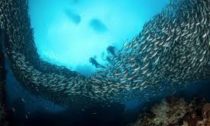
Chumpon Dive Site
Koh Tao
Thailand
Date of Dive 27/05/17
Time: 11:00 hrs
Bottom Time: 40 – 50 minutes
Sea pinnacle, horse mackerel bank, croaker, anemones, mere, bat fishes, giant crabs and squids.
Read More

Chumpon Dive Site
Koh Tao
Thailand
Date of Dive 27/05/17
Time: 11:00 hrs
Bottom Time: 40 – 50 minutes
Sea pinnacle, horse mackerel bank, croaker, anemones, mere, bat fishes, giant crabs and squids.
Read More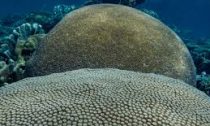
Shark Bay
Koh Tao
Thailand
Date: 26/05/17
Time: 12:00 hrs
Bottom time: 40 – 50 mins
Gobi, brain corals, lobster
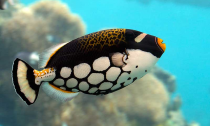
White Beach
Koh Tao
Dive 25/05/17 – 14:00 hrs
Bottom time: 50 – 60 minutes
Angel fish, Crossbow fish, Morena, Dog fish, Parrot fish, Sergent fish
Read More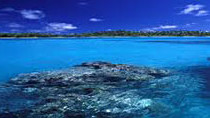
Computer-led analysis of tourist snaps has estimated that coral reefs contribute $36 billion per year to the global tourist economy. Scientists used big data computing techniques to study 20 million images uploaded to image hosting website Flickr. The pictures enabled them to create a map detailing the value of coral reefs around the world.
The authors hope that their findings will encourage the tourism industry to act responsibly, and to lobby governments on how best to manage coral reefs.
Complex analysis
Researchers used a technique known as data mining – in which computers speed-read information associated with each image – to analyse photos taken by visitors to reefs.
They were able to assess details of visits to reefs and tourists’ spending nearby.
Scientists were able to diffe...
Read More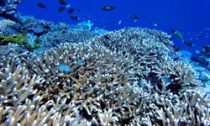
Periodic disturbances to coral reefs increase coral diversity by creating new space for new species to colonize. Shortly after a disturbance it is usually the “weedy” species like branching Pocillopora and Acropora species that come back first. Weedy species on reefs simply refers to fast growing corals that are quick to colonize a reef after a disturbance.
Sometimes if broken fragments of these species get lodged into crevices in the reef they will continue growing and form a colony again. Weedy species therefore are critical for the rapid recovery of coral reefs after disturbances.
But what if there are not weedy species around? How does that affect the recovery of reefs? These are the questions that increasingly worrying me, and here is why...
Read More
Plastic waste entering the seas from both sides of the North Atlantic is accumulating in the Arctic Ocean, where it can damage local wildlife.
The low population of the Arctic Circle means little plastic waste is generated there. However, a new study has shown that the Greenland and Barents Seas (east of Greenland and north of Scandinavia) are accumulating large amounts of plastic debris that is carried and trapped there by ocean currents.
The new study, published today in Science Advances, found that the Greenland and Barents seas have accumulated hundreds of tons of plastic debris composed of around 300 billion pieces, mainly fragments around the size of a grain of rice. The vast majority of these fragments originate form the North Atlantic.
The team behind the study is composed of resea...
Read More
It’s an understatement to say that we hear about a lot of ingenious uses of 3D printing on a regular basis. One of my favorites, and one of the most brilliant, in my opinion, is the way that several scientists have used the technology to save endangered coral reefs. We’ve taken a look at the work that Reef Design Lab has done, as well as Fabien Cousteau and Dr. James Gardiner, and while the methods and locations may differ slightly, the goal is the same – to help failing coral reefs to restore themselves with the help of some 3D printed supplementation.
Dr. Renata Ferrari of the University of Sydney has taken a multifaceted approach to her work with coral reefs and 3D technology. Every plan of action starts with gaining as much knowledge as possible, and that’s what Dr...
Read More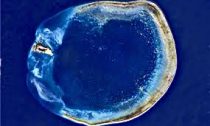
Vibrant coral reefs in the South China Sea have been decimated due to a combination of global warming and local weather. The combined factors produced a 42 degree Fahrenheit rise in temperatures around the Dongsha Atoll, killing 40 percent of its coral population, according to a study by the Woods Hole Oceanographic Institution.
The reef system relies on wind and waves to flush warm, shallow water out of the reefs and bring in cooler water from the open ocean. Corals can only survive within certain temperature limits: when those limits are exceeded, corals get stressed and release the algae they need to survive. One hundred percent of the coral reefs bleached in the 2015 event, ending with 40 percent of them dead.
“Dongsha Atoll is typically hit with tropical storms and strong winds in ...
Read More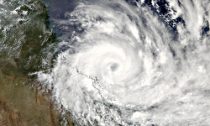
A powerful cyclone that smashed into northeastern Australia could have caused further damage to the under-pressure Great Barrier Reef, turning parts into an “underwater wasteland”, scientists warned Thursday, March 30.
There are already fears for the survival of corals in the central and northern areas of the World Heritage-listed marine ecosystem that stretches 2,300 kilometers (around 1,430 miles) off the Queensland state coast, after two consecutive years of mass bleaching from warming sea temperatures.
While storms can bring relief through rain and cloud cover to corals suffering from heat stress, Tropical Cyclone Debbie, which barreled through the region this week, mostly struck the reef’s southern parts, which have not been as seriously impacted by bleaching.
“It basically came throu...
Read More
Social Profiles